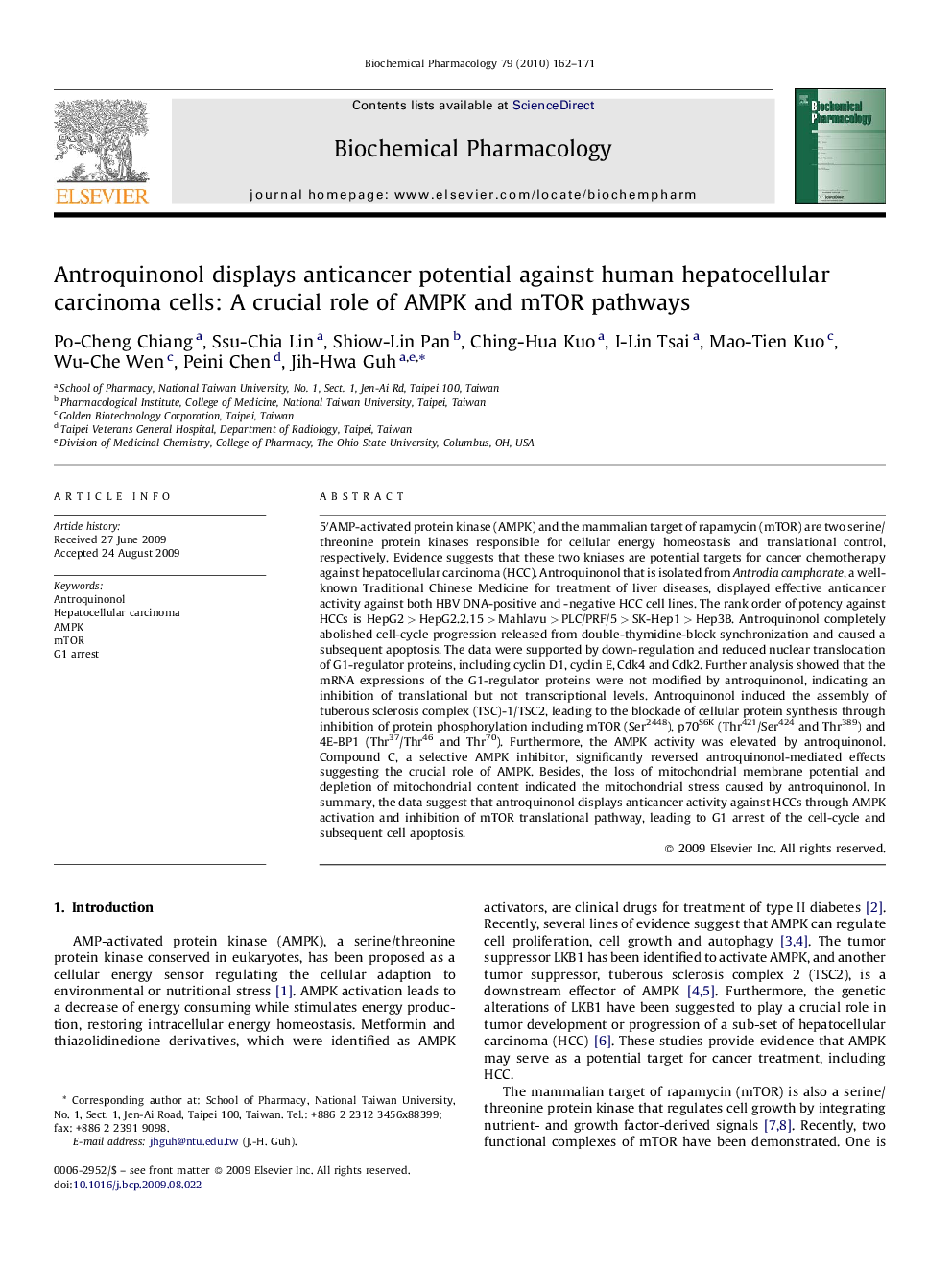| Article ID | Journal | Published Year | Pages | File Type |
|---|---|---|---|---|
| 2513813 | Biochemical Pharmacology | 2010 | 10 Pages |
5′AMP-activated protein kinase (AMPK) and the mammalian target of rapamycin (mTOR) are two serine/threonine protein kinases responsible for cellular energy homeostasis and translational control, respectively. Evidence suggests that these two kniases are potential targets for cancer chemotherapy against hepatocellular carcinoma (HCC). Antroquinonol that is isolated from Antrodia camphorate, a well-known Traditional Chinese Medicine for treatment of liver diseases, displayed effective anticancer activity against both HBV DNA-positive and -negative HCC cell lines. The rank order of potency against HCCs is HepG2 > HepG2.2.15 > Mahlavu > PLC/PRF/5 > SK-Hep1 > Hep3B. Antroquinonol completely abolished cell-cycle progression released from double-thymidine-block synchronization and caused a subsequent apoptosis. The data were supported by down-regulation and reduced nuclear translocation of G1-regulator proteins, including cyclin D1, cyclin E, Cdk4 and Cdk2. Further analysis showed that the mRNA expressions of the G1-regulator proteins were not modified by antroquinonol, indicating an inhibition of translational but not transcriptional levels. Antroquinonol induced the assembly of tuberous sclerosis complex (TSC)-1/TSC2, leading to the blockade of cellular protein synthesis through inhibition of protein phosphorylation including mTOR (Ser2448), p70S6K (Thr421/Ser424 and Thr389) and 4E-BP1 (Thr37/Thr46 and Thr70). Furthermore, the AMPK activity was elevated by antroquinonol. Compound C, a selective AMPK inhibitor, significantly reversed antroquinonol-mediated effects suggesting the crucial role of AMPK. Besides, the loss of mitochondrial membrane potential and depletion of mitochondrial content indicated the mitochondrial stress caused by antroquinonol. In summary, the data suggest that antroquinonol displays anticancer activity against HCCs through AMPK activation and inhibition of mTOR translational pathway, leading to G1 arrest of the cell-cycle and subsequent cell apoptosis.
Graphical abstractFigure optionsDownload full-size imageDownload as PowerPoint slide
